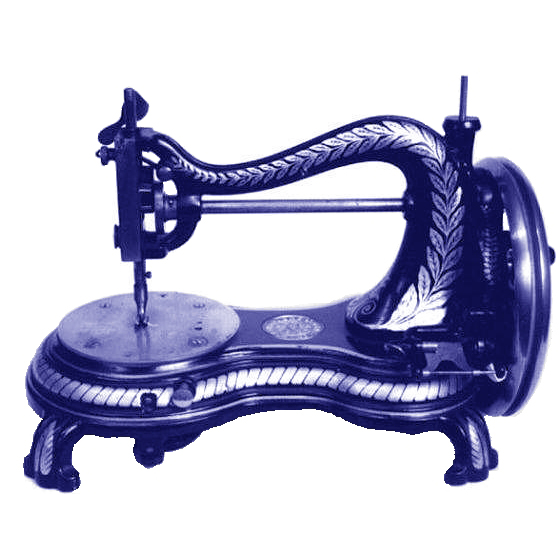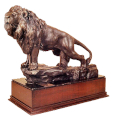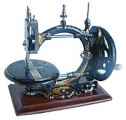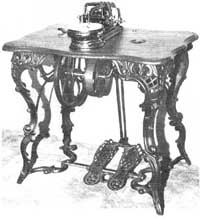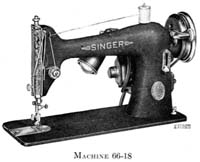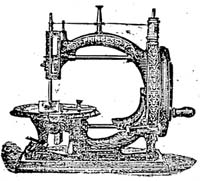IMCA Museum
Graham Forsdyke previews the IMCA museum
THE COMPARISONS are obvious...
At Mullhouse in France in the 1960s two brothers collected motor cars and built themselves a museum dedicated to the glory of the subject of Bugatti automobiles which was their all-consuming interest.
At Haarlem, in Holland, two brothers are now collecting sewing machines and have built a museum again dedicated to the history of the subject which they pursue with an interest that is simply bordering on fanaticism.
But there are important differences.
In France the Schulmp brothers' collecting fever, funded by black money and known in the classic-car world as the "magnificent obsession", resulted in a secret hideaway for the vehicles -- most obtained in clandestine deals. In fact the existence of the museum was virtually unknown until a workers' revolt for better wages led to a government investigation and the eventual seizure of the collection in lieu of unpaid taxes.
In Haarlem it's all very different. The obsession that the de Vlieger family have with old sewing machines is all above board but, perhaps, no less an obsession.
It all started with the founder of the company Jan de Vlieger who, 30 years ago, ran a sewing-machine shop. He was offered an old sewing machine for help he had given a local builder.
But it was the acquisition of the first Maggie Snell collection some 14 years ago that really started the collecting fever and when, in 1983, the two brothers Erik and Franz, together with their sister Emmy took over the family business, every opportunity to add new machines was grabbed.
It's said that the two brothers work an 18- hour day and a six-day week. If anything that's something of an underestimation.
We spent a full day with them and our talk scarcely veered from antique sewing machines. And their interest is not purely acquisitive. They yearn to learn more and more about the subject and treat the arrival of a new ISMACS News as a red-letter day.
When the business of dealing in new and used industrial sewing machines outgrew the previous factory and demanded new premises in Haarlem, the chance to create a purpose-built museum was one that neither Erik nor Franz could even hop resist.
Without their own magnificent obsession, the museum would have been a simple row of shelves in one corner of a warehouse where dust covers could be thrown back for the benefit of the occasional visitor.
Instead we have a canal-side building protected by armour-plate glass on two floors which, by its very concept, shows the brothers' willingness to experiment with new design concepts without throwing away traditional values.
Let's start at the ground floor.
You enter through a security door, and the dazzling array of glass and Italian marble drags your eyes away from the specially-made carpet with its woven design of a series of Jones sewing machines.
Much thought has been given to the layout of this room with its sloping, shelved, dividers changing the view and opening up the room further with each step you take.
Concealed lighting picks out the machines, arranged by country of origin with, for example, Hurtu models from France displayed on one section of wall and English models forming a line along one of the angled dividers.
The whole room is designed within a modern concept which in 10 years time will still not look dated.
It's a room that some will love, a few will hate, but the contrast between the ancient and modern can be ignored by none. In fact the stark straight, clean lines of the decor emphasize the exhibits it holds.
And what exhibits they are.
Here you will find patent models from America, rare British items that had MS grabbing for the camera and American machines that even the Smithsonian Institution has only read about.
A davenport desk Britannia stands by a display of exotic 19th Century French table models and a series of monopod treadle stands guard over an English collection of Starley, Newton Wilson and Whight & Mann machines.
There are rare models from Watson and a range of Singer machines, including 1s and 2s and also one of the two Turtleback models in private hands.
Some machines are so rare that they have yet to be identified and the only way you'll ever see two is to stand back and enjoy the reflection of the collection in the mirrored roof of the room.
But what of the other room we had been told about?
It had to be different, for both Erik and Franz carefully led us upstairs and positioned themselves to catch our reaction as we entered.
I'm sure they got a result, for the second room of the museum could not have been more different from the first.
What the brothers have a achieved in the upstairs room is to create a Victorian street scene -- a series of shop windows devoted to sewing machines and go withs, lit by street lamps and featuring, in its centre, a reproduction of Singer's workshop.
The contrast between the two rooms could not have been greater. On one floor something out of the New York Metropolitan Museum of Modern Art and above it a street scene plucked from the time of Dickens.
And strangely enough, the odd contradiction works. MS and I later found ourselves, inevitably, discussing which room we preferred. We couldn't agree, mainly because we kept changing our minds and in the end we decided that it didn't matter because the whole concept, which could so easily have done disastrously wrong, succeeded and the contrast which could have so easily have dramatically clashed, actually merged within the framework of the exhibits.
Believe me, no expense has been spared. Stained-glass windows have been lovingly re-created, as have marble pillars, tiled walls and the brickwork of the shop fronts.
The museum, many years in the creation, was all-but finished when we had our preview. All that had to be done was the final selection of machines, the labeling of the exhibits and detail work in the Singer workshop. It will all be completed by September when IMCA hosts the Continental collectors' meeting (Full details elsewhere in this issue).
We often ask collectors what machine they would grab in the event of a fire. Both Erik and Franz eventually opted for the Balhazar Krems model from 1811, but I've an idea that they'd still be grabbing machines as they perished in the flames.
Not everything in the IMCA collection will be on show -- even in this museum there isn't enough room. But the selection will include the rarest and most important machines from the early days of the industry.
The museum will not appear in any guide book. It will just be open for viewing by IMCA customers and collectors who have made an appointment.
They will be shown around by Franz's wife, Marianne, who is fast becoming as expert on the subject.
It will not be open to casual visitors who want to fill in a rainy afternoon. It's a museum for the enthusiast. People who, like and Franz and Erik, have something, however little, of a magnificent obsession.
